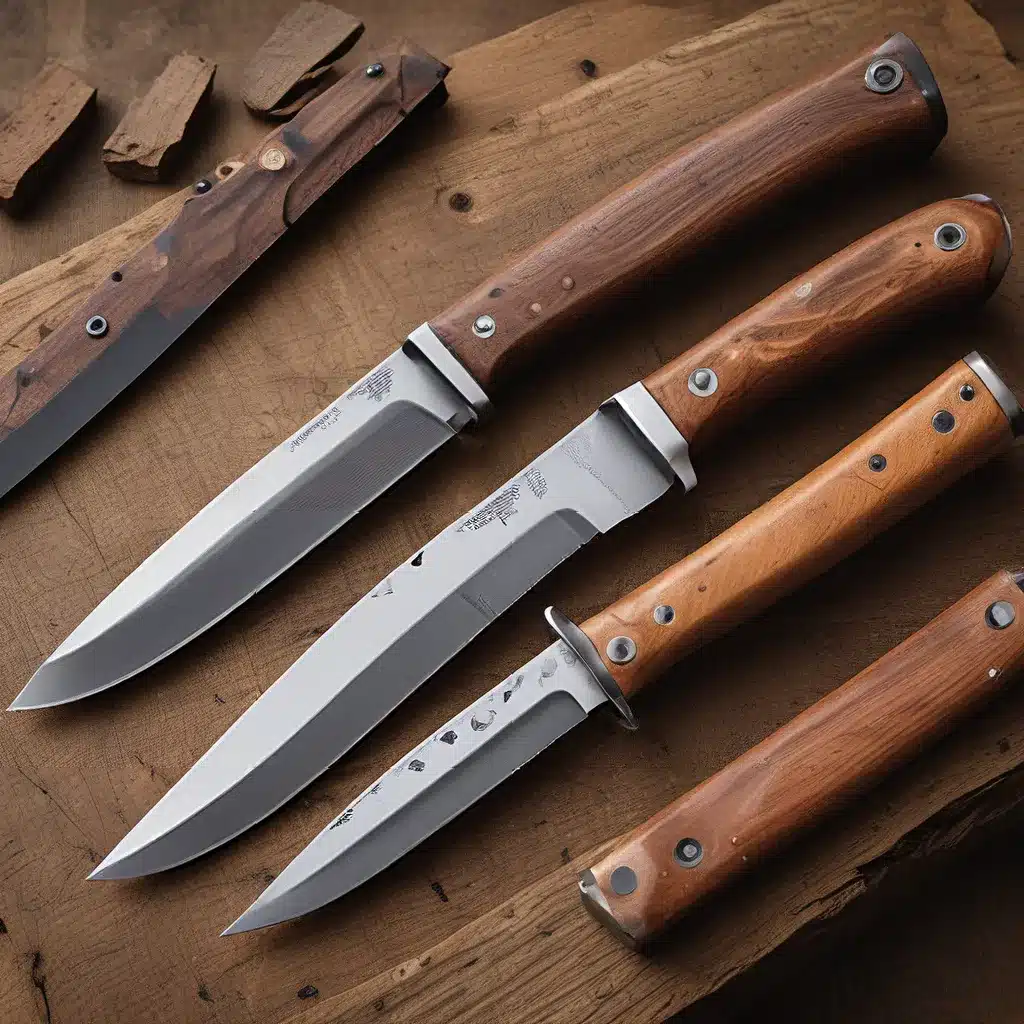
Tucked away in the heart of the Appalachian Mountains, a rich legacy of knifemaking thrives, harnessing the lessons of the past to forge a future that cuts with precision and elegance. From the rugged blacksmiths of colonial times to the modern-day artisans, the story of American knifemaking is one of adaptation, innovation, and an unwavering dedication to the craft.
The Forge of Our Forefathers
Picture this: it’s the late 1700s, and you’re walking through a quaint village in the Virginia countryside. The air is thick with the scent of coal and the rhythmic clanging of steel on steel. In the back of a dimly lit workshop, a blacksmith, his brow glistening with sweat, meticulously shapes a blade, using techniques passed down through generations.
These were the days when knives were not just tools, but extensions of the self – a reflection of the rugged individualism that defined the American spirit. The blacksmiths of old were more than just craftsmen; they were the guardians of a tradition that could turn a humble piece of metal into a work of art.
“As a young lad, I was captivated by the tales of those early blacksmiths,” reminisces Paul White, a renowned knife-maker with over four decades of experience. “They had a way of imbuing each blade with a sense of personality and purpose – like they were breathing life into the steel.”
Adapting to the Times
The passage of time, however, brought about a transformation in the world of American knifemaking. With the advent of industrialization, the once-solitary blacksmith’s workshop gave way to the efficiencies of mass production. While this allowed for greater accessibility and affordability, it also threatened to dilute the unique character that had long defined the American knife.
But the true artisans of the craft refused to let their legacy fade into obscurity. They adapted, incorporating new technologies and techniques, while still honoring the traditions that had shaped their craft.
“It wasn’t easy, you know,” Paul recalls, a twinkle in his eye. “The old-timers, they didn’t take kindly to these ‘newfangled’ machines. But the smart ones, they saw the opportunity – they learned to harness the power of technology while still keeping the soul of the knife alive.”
The Rise of the Modern Artisan
And so, a new era of American knifemaking was born – one where the old and the new coexisted in a delicate balance. Artisans like Paul dedicated themselves to mastering the art of forging, tempering, and sharpening, using a combination of time-honored techniques and cutting-edge tools.
“It’s all about finding that sweet spot,” Paul explains, his calloused hands gesturing with a sense of reverence. “You’ve got to respect the past, but you’ve also got to be willing to push the boundaries. That’s where the magic happens.”
The results of this blend of old and new are nothing short of breathtaking. From the sleek, minimalist designs of the Seki knives to the intricate Damascus patterns of the Sakai blades, the modern American knife is a testament to the enduring spirit of the craftsman.
Herman Knives, for example, has carved out a niche for itself by combining traditional Japanese knifemaking techniques with the rugged sensibilities of the American frontier. Their knives, forged in the heart of Appalachia, seamlessly blend form and function, making them a coveted choice among chefs and outdoor enthusiasts alike.
The Continuing Saga
But the story of American knifemaking doesn’t end here. As the world continues to evolve, so too does the art of the blade. Emerging makers are pushing the boundaries, exploring new materials, and reimagining the very essence of what a knife can be.
“I look at these young folks, and I’m just in awe,” Paul muses, a wistful smile spreading across his face. “They’re taking everything we’ve learned and propelling it into the future. Who knows what the next generation of American knives will look like?”
One thing is certain: the forge that first sparked the American knifemaking tradition still burns bright, its flames fanned by the passion and ingenuity of those who carry on the legacy. Whether you’re a seasoned collector or a novice seeking your first custom knife, the story of American knifemaking is one that promises to captivate and inspire for generations to come.
So, the next time you hold a well-crafted knife in your hand, take a moment to imagine the centuries of history and craftsmanship that have led to this very moment. For in the steel and the wood, the sweat and the skill, lies the enduring spirit of the American knifemaker – forged in tradition, tempered by time, and forever etched into the fabric of our national identity.


